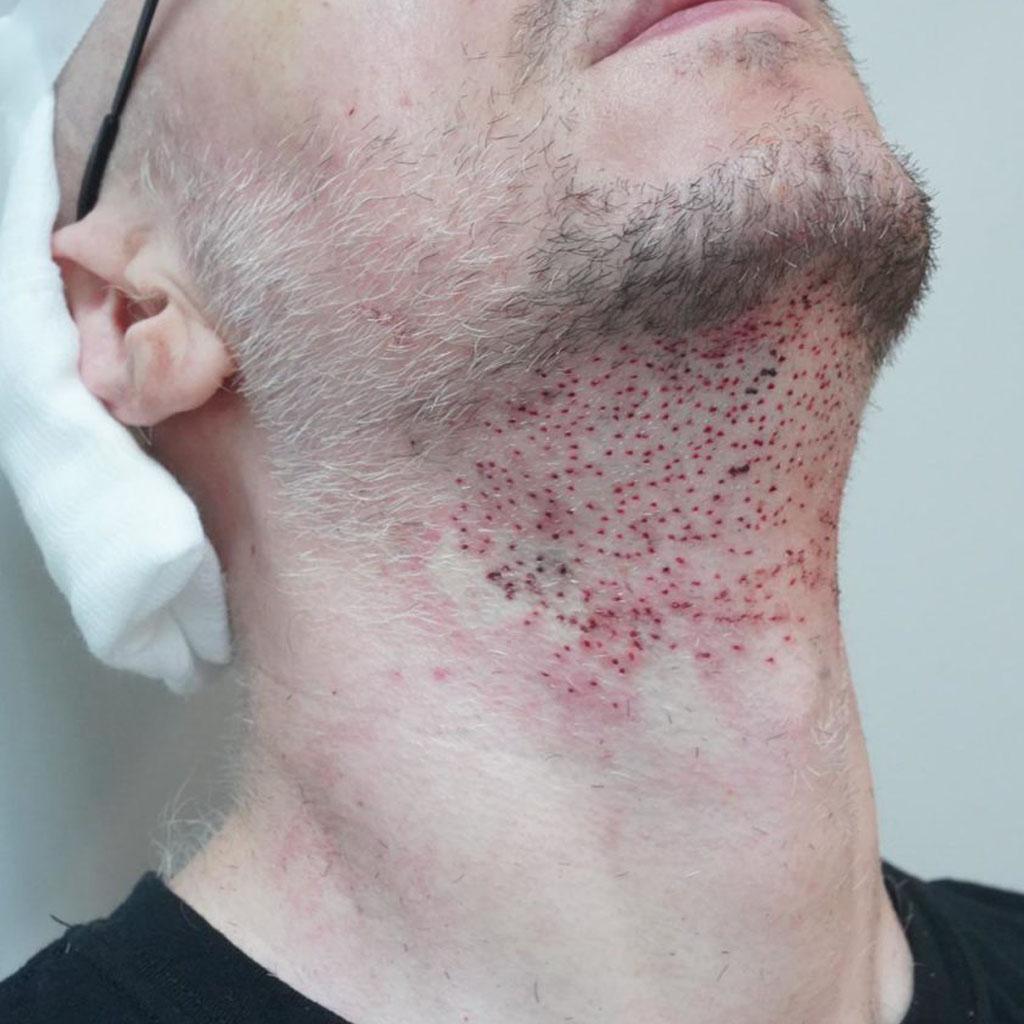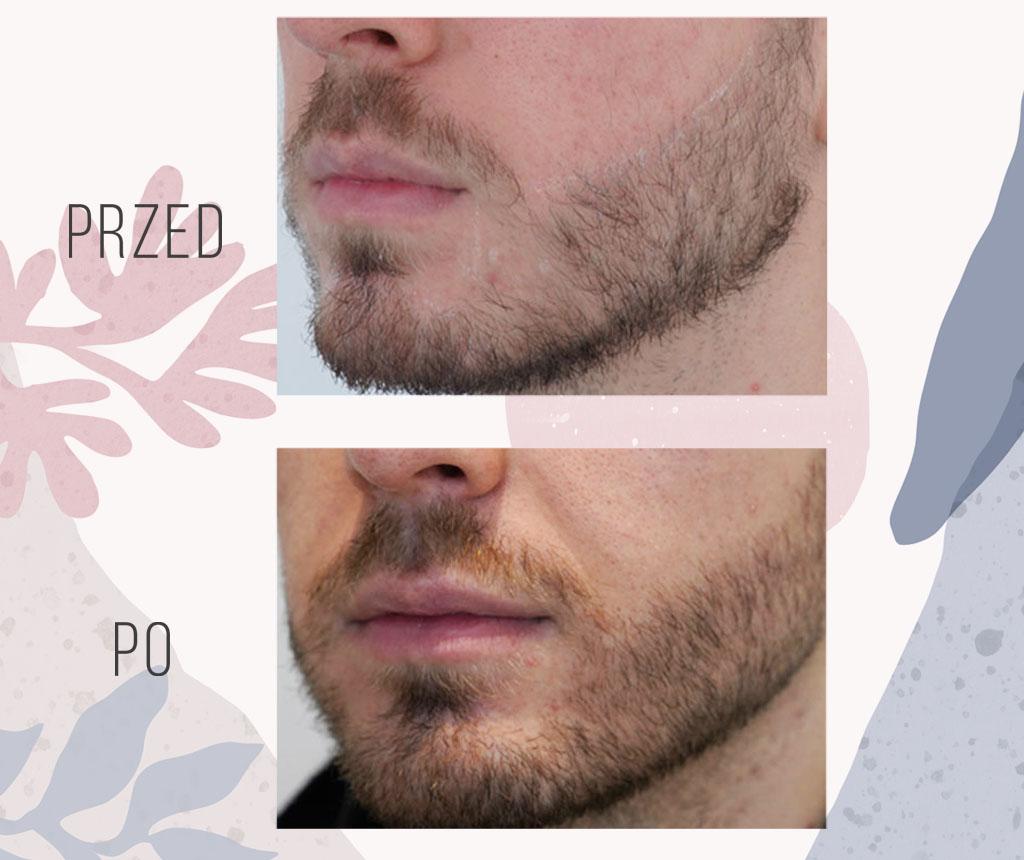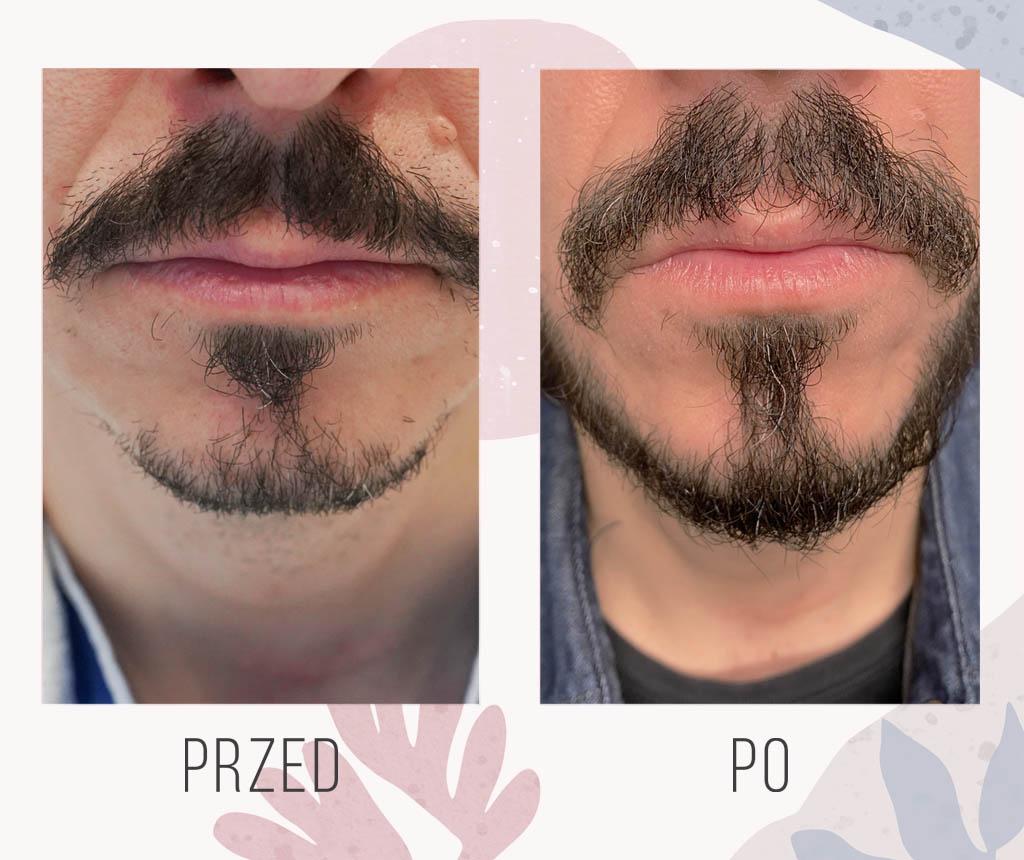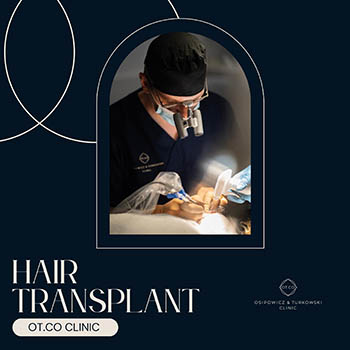TL;DR:
- Beard hair transplants move hair to the face to create a full beard, with various costs and risks involved.
- FUE (Follicular Unit Extraction) is a specific transplant technique with quicker recovery and minimal scarring but can be expensive.
- Costs of beard transplants range from $5,000 to $15,000, influenced by the number of hairs transplanted and clinic factors.
- Candidacy for a transplant depends on health, age, and sufficient donor hair; alternatives may better suit budget and style.
- Recovery from a beard transplant usually takes a few weeks, with initial discomfort and special care requirements.
- Risks include infection and dissatisfaction with results; alternatives like creams or micropigmentation can be cheaper and simpler.
- Real-life transplant results enhance masculine appearance, offering customizable beard styles; results are visible in before-and-after photos.
Picture a full, well-shaped beard that turns heads and boosts confidence. Is it just a dream? Not anymore! Welcome to the world of beard hair transplants, a game-changer for men seeking facial hair perfection. If you’ve struggled with patchy spots or light growth, this read is for you. We dive into whether this transformative procedure is worth the time, cost, and effort. Get ready to meet a new you!
What Are the Basics of a Beard Hair Transplant?
A beard hair transplant turns a bare face into a full one. It boosts your manly look. This facial hair enhancement moves hair to your face. Hair can come from the neck, chin, or cheeks. It can fill in thin spots or shape a whole beard.
The beard restoration procedure is like scalp hair transplants. But it uses face skin, which is different. Face skin heals faster than scalp skin. The hair also grows different. Beard hair is coarser than scalp hair. So, the doctor must match the hair type and growth pattern well.
The cost can be high for a beard hair transplant. It depends on how many hairs you move. For example, at OT.CO Clinic, 2500 transplants could cost PLN 32000. But there are other, cheaper ways to get a thick beard. They may better fit your wallet and how you want to look.
Like all surgeries, beard transplants come with risks. These can be infection, scars, or uneven growth. Always think hard and talk to a doctor before deciding. They can tell you if a beard hair transplant is right for you. They check your health, hair type, and what you expect. This helps them see if you’re a good fit for the surgery.
In short, a beard hair transplant is about moving hair to your face. It makes your beard look how you want. It can cost a lot, and there are risks. But for some, it’s the right choice to get the beard they’ve always wanted.
What Is the FUE Beard Restoration Technique?
FUE stands for Follicular Unit Extraction. It’s a way to move hair to your face. It can fill in a thin beard, making it look full and lush. People like how it boosts their manly look. But, it’s a real surgery with some risks. There are other ways to get a fuller beard that might cost less.
First, the doctor picks a spot to take hair from, like the back of your head. This is the donor site. Then, they use a special tool to take out single hair follicles. These are moved to your face where you want more hair. You might hear this called grafting.
It’s a careful job. Each hair is placed just so, to look natural and grow right. They put it on your cheeks, chin, or neck. It has to match the way your beard grows. This takes time and skill. You want a doctor who knows what they’re doing. Look for the best clinics for facial hair grafting to get good results.
Why pick FUE over other ways? It leaves less scars. It heals faster. And you can choose how thick you want your beard. You don’t get that with all methods.
Now, how do you pick a clinic? Look for ones that do lots of FUE. Check out their before and after photos. Read reviews from other guys. And ask about the price. It changes based on how many hairs you move. For example, at OT.CO Clinic, it starts at 10 PLN per graft. The more you do, the less each costs. A big job, like 2500 grafts, could be 32000 PLN.
Remember, this is your face. You want it to go well. Take your time. Do your homework. And find a team you trust. They should talk you through it all. They’ll tell you what to expect and how to care for your new beard as it heals.
What Factors Influence the Cost of Beard Surgeries?
The cost of beard surgeries varies. How much? On average, beard transplants may cost from $5,000 up to $15,000. It depends on several factors. One main factor is how many hairs you need transplanted. More hairs mean higher costs.
Different beard implantation cost variables change the pricing. If you pick a top surgeon, expect to pay more. Also, the clinic’s location can affect the cost. Big cities often have higher prices. Do not forget to check the price list of the clinic you consider.
The financial side of a facial hair transplant price needs careful thought. It is a big choice. If you have a tight budget, a full beard may seem out of reach. But some clinics offer a payment plan. This can make it easier to afford the change you want.
Remember, getting a beard transplant is about more than just the cost. It can boost how you feel about your look. For many, the change is worth every penny.
Beard transplants take hair from where you have a lot. They put this hair on your face. This gives you the beard you want. It is a big step to get a beard transplant. You must think about your health, the risks, and the cost. Every surgery has risks. But with a skilled doctor and care, many are happy with their new beards.
There are other choices if a beard transplant is too much money. Some opt for less costly ways to enhance their look. These options can also give you the beard you dream of.
To sum up, how much you pay for a beard transplant depends on how complex your case is, who does the surgery, and where it is done. Look at all your choices. Make sure it matches what you can spend and what you want for your look.
How Do You Assess Your Candidacy for Facial Hair Transplants?
Wondering if you can get a beard transplant? Start by asking: How old am I? Am I healthy? How’s my donor hair? You’ll need a full pre-transplant beard evaluation. The right age and good health matter. So does having enough hair to move to your face.
A full beard can make a face look more manly. Getting hair moved from one spot to the face does this. But, like all surgery, it has risks. You could get hurt or not like the look. It can also cost a lot. There are other choices. They may fit your wallet and style needs better.
For this, you need a good facial hair transplant eligibility check. A doctor will see if you’re right for the surgery. They look at your health, age, and hair. If you’re healthy, over a certain age, and have good donor hair, that’s a good start.
Lastly, think about other choices before deciding. You might find something better for your needs. Always look at all your options. Then, pick what’s best for your face and pocket.
What Can You Expect During Recovery From Beard Transplant?
Recovery time from a beard transplant can vary. On average, it lasts a few weeks. Following post-surgery care steps closely is key for a good recovery. How long does transplant facial hair recovery time typically last? The most intense recovery happens in the first two weeks. After that, it gets much easier. Now, let’s go into more detail about what you can expect during this time.
In the first few days, you might notice swelling, redness, and some discomfort. This is normal. The clinic will give you guidelines on how to care for your new beard. They will advise you to avoid touching the area too much. They also might tell you not to shave or trim your beard right away.
You should also expect some scabbing where hairs were taken out and put in. Don’t pick at these scabs. Picking can harm the hair and slow down healing. Around a week to ten days after surgery, these scabs should fall off on their own.
Sleeping can be a bit hard in the first few days. Try to keep your head raised. This can help with swelling. Avoid hard workouts or anything that can make you sweat a lot. Sweating can raise the risk of infection.
After two weeks, most of the healing should be over. You might still see some redness, but it will fade. New hair will slowly start to grow within a few months. Some hairs might fall out at first. This is called “shock loss,” but it’s a normal part of the process. The roots stay in place, so new hair will keep growing.
Keep in mind, the full results take time. It can be a year before you see the full, final look of your beard. During all this time, follow the care instructions you got from your clinic. If you have questions or worries, reach out to them.
What post-beard surgery care is recommended? Always follow your clinic’s advice. They might suggest special shampoos or ointments. They will also tell you when you can go back to your normal routine, like shaving and skin care.
Remember, having patience is key. Good things take time, and this includes waiting for your new beard to grow.
Are There Any Risks or Alternatives to Beard Transplant Methods?
A beard transplant can change a smooth face into a full beard. It takes hair from another spot and puts it on your face. But with any surgery, there are risks. They could be small or big. The cost might also be too much for some people. There are other ways to get a beard without a transplant. They might be better in cost and looks.
What Risits Are Associated With Beard Transplant Methods?
Yes, risks are there. You could get an infection. You might also not like how it looks in the end. The risks depend on where you get your surgery and who does it. Be careful when picking a clinic.
How Do Beard Thickening Procedures Compare to Transplants?
Procedures that make your beard thicker work well for some. But they might not give the same thick look as a transplant. Plus, they don’t last as long. A transplant is more of a one-time thing, but it’s also more work.
In the end, choosing the right method for you means looking at risks, how much it costs, and what you want. Chat with a doc to find the best path. If you’re curious about the money part, check this out: OT.CO Clinic FUE transplant for graft prices. Remember, each face is unique. What works for one might not work for another. Pick the best for your beard dream!
What Are the Real-Life Results of Beard Hair Transplantation?
A beard transplant can turn a bare face into one with a full beard. This enhances the masculine appeal. The procedure involves relocating hair from one part of the body to the face. This is often from the back of the scalp to the cheeks, chin, or neck.
OT.CO Clinic offers a FUE 1 transplant for example. This is where 1 to 5 hairs are used for each graft. They charge starting from 10 PLN per graft.
People often ask, “How Effective Is Before and After Facial Hair Grafting in Showing Results?” Photos before and after show the change clearly. They let you see the possible outcomes. “Can You Share Any Beard Transformation Stories?” Yes, many men share stories. They tell of their newfound confidence after getting a fuller beard.
Mustache transplantation options vary. This depends on your face shape and growth. A good clinic will offer custom plans. “What Are the Mustache Transplantation Options and Results?” You can choose the thickness and the shape that suits you best.
Alternatives to beard transplants exist. They may fit better for your wallet and your look. You could try beard thickening products or lifestyle changes. Each option has its own set of benefits and downsides.
So, when you think about real-life results, remember to weigh the pros and cons. Look at before and after photos. Read stories of others who took the step. Consider your own needs and talk to a professional. This will help you decide if a beard transplant is worth it for you.
Conclusion
In this post, we explored every angle of beard hair transplants. We covered the procedure, FUE tech, costs, who’s fit, recovery, and risks. If a full beard is your aim, remember to pick a top clinic and plan for the journey.









